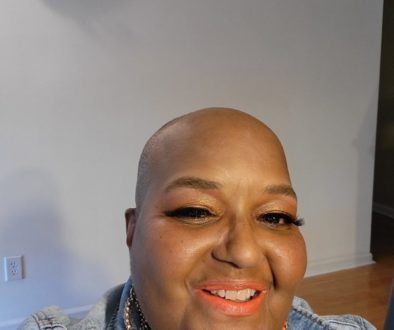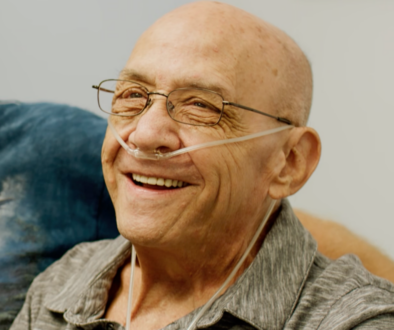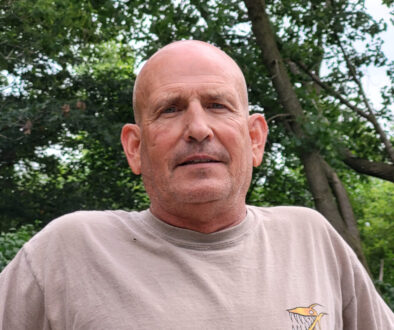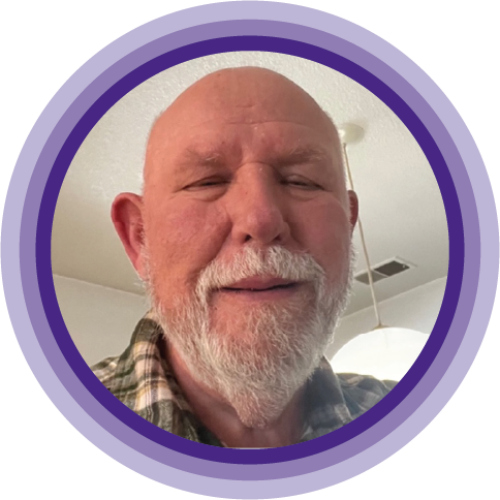
Roxy‘s Story
My advice for anyone who is considering the Zephyr® Valve treatment is to go for it! You’ll be able to get back to things you took for granted when you were healthier.
Procedure Details:
Age at Treatment: 68
Date of Procedure: April 2022
Hospital: Corewell Health Butterworth Hospital – Grand Rapids, MI
Roxy’s Story
My advice for anyone who is considering the Zephyr® Valve treatment is to go for it! You’ll be able to get back to things you took for granted when you were healthier.

Procedure Details:
Age at Treatment: 68
Date of Procedure: April 2022
Hospital: Corewell Health Butterworth Hospital – Grand Rapids, MI
Life Before Zephyr Valves:
I have lived in many places but I consider Michigan my home. I have also had a few different careers in my life. I was a dairy farmer in New Mexico and a paramedic in both Colorado and Michigan. I learned as a paramedic how to quickly assess medical situations, and became very aware of recognizing when my own body feels off.
I was living in Colorado with my brother when I first noticed my breathing was labored. For years I believed it was just from the altitude. My brother and I hiked Pikes Peak, a 14,000 feet elevation. When we got to the summit, I was struggling and couldn’t catch my breath. That difficult climb will have most people short of breath but even when we got back down, it seemed like my breathing never really recovered. I loved to be outside and enjoyed hunting, fishing, boating — things that people do without much thought. As this disease progressed, those things became harder and harder and I was put on 3 liters of oxygen 24/7 and a BiPAP machine.
My brother passed away and my breathing got worse. I knew I had to leave Colorado. I drove back to Michigan and as soon as I crossed over into Kansas my breathing felt so much better. I’m sure being closer to sea level had something to do with it. I honestly thought my breathing would continue to get better. Unfortunately, I began having weekly exacerbations. Thanks to my medical background, I could feel when they were coming and was able to manage them and avoid going to the hospital. I got all my charts and medical records from my doctor in Colorado sent over to a pulmonologist in Kalamazoo, MI who began treating my COPD.
On the way to dinner with two friends, an exacerbation came on out of nowhere. Thankfully I had all my medicine and equipment with me, but it was the longest dinner of my life. I remember sitting there unsure if another exacerbation was around the corner. I had to take a wheelchair from the door to my car and my friend had to drive home. One of the hardest parts of having a breathing attack is not only trying to catch your breath, but feeling helpless. There were times where I felt like giving up and that is something I feel like people with COPD don’t talk about enough. I am typically a very upbeat person and those negative feelings were very unlike me.
My current pulmonologist had tried different medication combinations and inhalers. None of the treatments made me feel any better, so he referred me to see an interventional pulmonologist. That was Dr. Cumbo-Nacheli in Grand Rapids, MI. He did the testing to see if I was a candidate for the Zephyr Valves.
Since receiving my valves, I have been on a trip to Colorado to visit a friend and a trip to Las Vegas! It has been a long time since I thought I would be able to fly on a plane for hours at a time with my COPD.
– Roxy
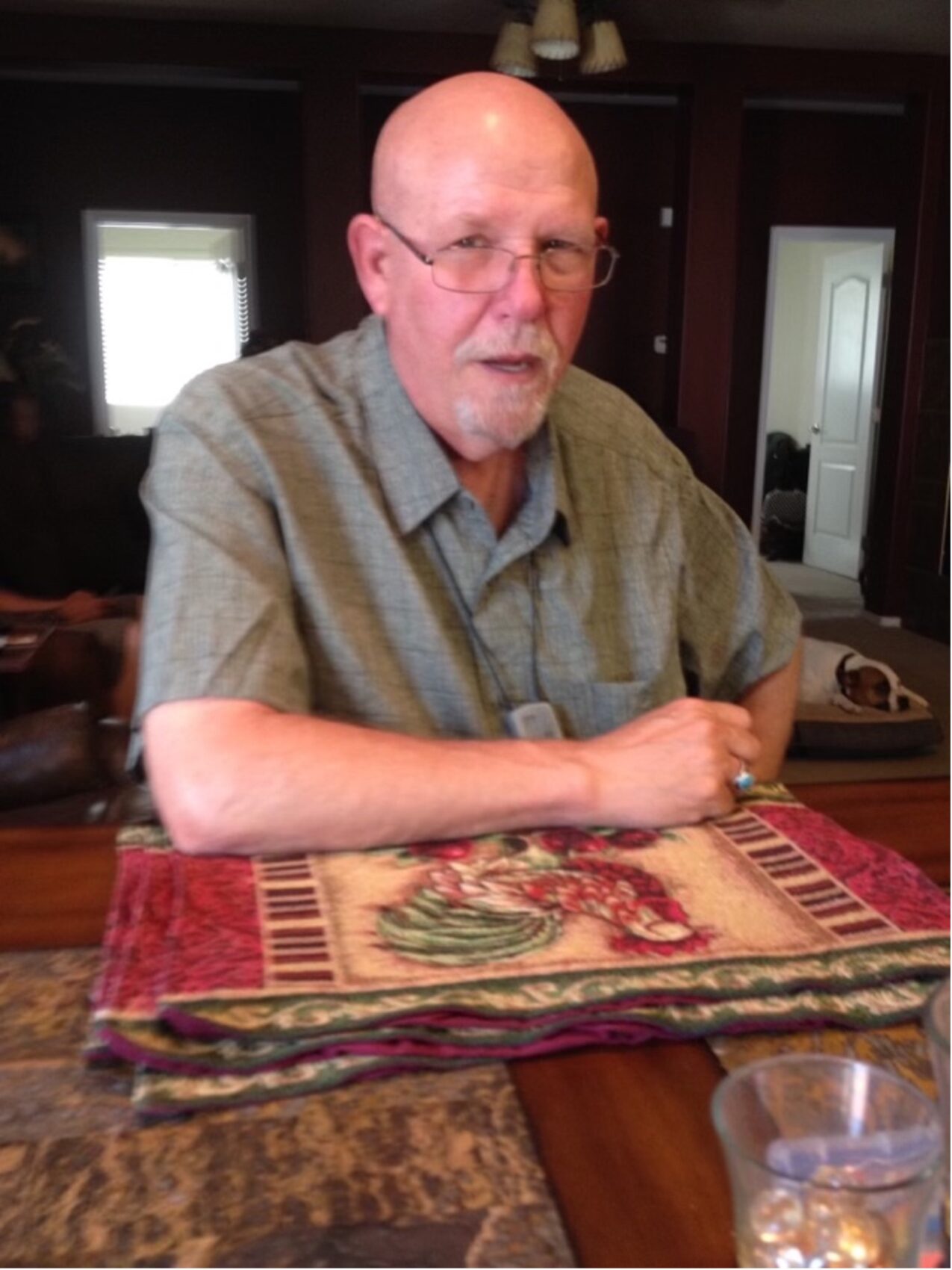
Life After Zephyr Valves:
After I went through the full work-up process for the procedure, I was told these valves might work for me. On paper I didn’t have the best numbers after all the testing. There was a chance I might not feel the full benefit of the valves, but I still wanted to give this a try.
The good news is after the procedure, I felt the valves working right away. I only had a small nagging cough for about a week after the procedure and a little bit of a sore throat from the scope.
Since receiving my valves, I have been on a trip to Colorado and a trip to Las Vegas! It has been a long time since I thought I would be able to fly on a plane for hours at a time with my COPD. In fact, I am feeling so good I am planning a trip to Hawaii.
Because I am responding so well to my Zephyr Valves, I am back to seeing my regular pulmonologists for routine checkups.
My advice for anyone who is considering the Zephyr Valve treatment is to go for it! Talk to your doctor — your internist, your pulmonologist, whoever you see to manage your COPD — because this is something that may make you feel better. You’ll be able to get back to things you took for granted when you were healthier.
I truly hope my story inspires others who have severe COPD/emphysema like me to take control of your life — you only get one!
Results may vary.
Caution: Federal law restricts this device to sale by or on the order of a physician.
¹Criner, G et al. Am J Resp Crit Care Med. 2018; 198(9):1151‒1164.
US-EN-1817-v1
What is the Zephyr Valve procedure?
The Zephyr Valve has been shown to help patients breathe easier, do more, and enjoy life.1
Despite taking the best available medications, many patients with severe COPD/emphysema suffer from hyperinflation of their lungs where air becomes trapped in the lungs, preventing fresh air from entering and thereby causing severe shortness of breath.
The Zephyr Valves reduce lung hyperinflation by allowing trapped air to escape and preventing new air from entering that diseased lobe. This allows the healthier parts of the lung to function better and results in patients being able to breathe more easily and experience less shortness of breath.
The valves are placed via bronchoscopy, with no incision or cutting, so these benefits are achieved without the risks of traditional surgical options. The procedure is usually complete in under an hour.
Complications of the Zephyr Endobronchial Valve treatment can include but are not limited to pneumothorax, worsening of COPD symptoms, hemoptysis, pneumonia, dyspnea and, in rare cases, death.
-
I have lived in many places but I consider Michigan my home. I have also had a few different careers in my life. I was a dairy farmer in New Mexico and a paramedic in both Colorado and Michigan. I learned as a paramedic how to quickly assess medical situations, and became very aware of recognizing when my own body feels off.
I was living in Colorado with my brother when I first noticed my breathing was labored. For years I believed it was just from the altitude. My brother and I hiked Pikes Peak, a 14,000 feet elevation. When we got to the summit, I was struggling and couldn’t catch my breath. That difficult climb will have most people short of breath but even when we got back down, it seemed like my breathing never really recovered. I loved to be outside and enjoyed hunting, fishing, boating — things that people do without much thought. As this disease progressed, those things became harder and harder and I was put on 3 liters of oxygen 24/7 and a BiPAP machine.
My brother passed away and my breathing got worse. I knew I had to leave Colorado. I drove back to Michigan and as soon as I crossed over into Kansas my breathing felt so much better. I’m sure being closer to sea level had something to do with it. I honestly thought my breathing would continue to get better. Unfortunately, I began having weekly exacerbations. Thanks to my medical background, I could feel when they were coming and was able to manage them and avoid going to the hospital. I got all my charts and medical records from my doctor in Colorado sent over to a pulmonologist in Kalamazoo, MI who began treating my COPD.
On the way to dinner with two friends, an exacerbation came on out of nowhere. Thankfully I had all my medicine and equipment with me, but it was the longest dinner of my life. I remember sitting there unsure if another exacerbation was around the corner. I had to take a wheelchair from the door to my car and my friend had to drive home. One of the hardest parts of having a breathing attack is not only trying to catch your breath, but feeling helpless. There were times where I felt like giving up and that is something I feel like people with COPD don’t talk about enough. I am typically a very upbeat person and those negative feelings were very unlike me.
My current pulmonologist had tried different medication combinations and inhalers. None of the treatments made me feel any better, so he referred me to see an interventional pulmonologist. That was Dr. Cumbo-Nacheli in Grand Rapids, MI. He did the testing to see if I was a candidate for the Zephyr Valves.
-
After I went through the full work-up process for the procedure, I was told these valves might work for me. On paper I didn’t have the best numbers after all the testing. There was a chance I might not feel the full benefit of the valves, but I still wanted to give this a try.
The good news is after the procedure, I felt the valves working right away. I only had a small nagging cough for about a week after the procedure and a little bit of a sore throat from the scope.
Since receiving my valves, I have been on a trip to Colorado and a trip to Las Vegas! It has been a long time since I thought I would be able to fly on a plane for hours at a time with my COPD. In fact, I am feeling so good I am planning a trip to Hawaii.
Because I am responding so well to my Zephyr Valves, I am back to seeing my regular pulmonologists for routine checkups.
My advice for anyone who is considering the Zephyr Valve treatment is to go for it! They can be removed, if need be, so my feeling is there is nothing to lose. Talk to your doctor — your internist, your pulmonologist, whoever you see to manage your COPD — because this is something that may make you feel better. You’ll be able to get back to things you took for granted when you were healthier.
I truly hope my story inspires others who have severe COPD/emphysema like me to take control of your life — you only get one!
-
The Zephyr Valve is the first FDA-approved, minimally invasive device available in the U.S. for treating patients with severe emphysema. A physician uses a bronchoscope to place on average 4 tiny valves in the airways to block off the damaged areas of the lungs so air no longer gets trapped there. No cutting or incision is required and the procedure is usually completed in under an hour.
The valve placement allows the healthier parts of the lungs to expand and relieves the pressure on the diaphragm, which decreases shortness of breath and makes breathing easier. Patients report being able to take full breaths immediately after the procedure and within a few days are back to doing everyday tasks with ease.
Results may vary.
Since receiving my valves, I have been on a trip to Colorado to visit a friend and a trip to Las Vegas! It has been a long time since I thought I would be able to fly on a plane for hours at a time with my COPD.
– Roxy


